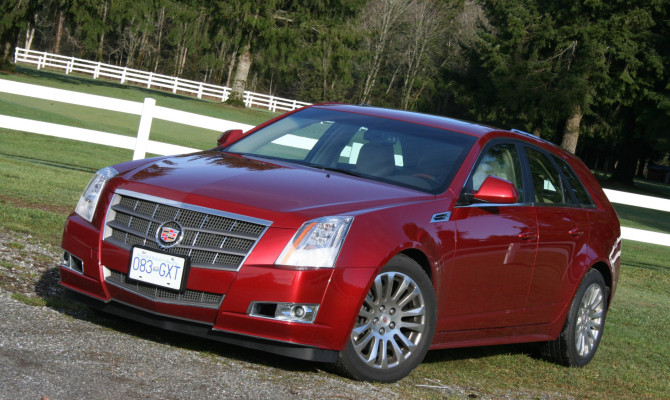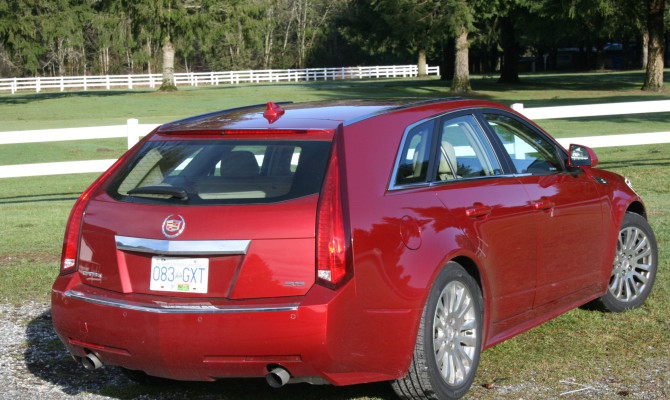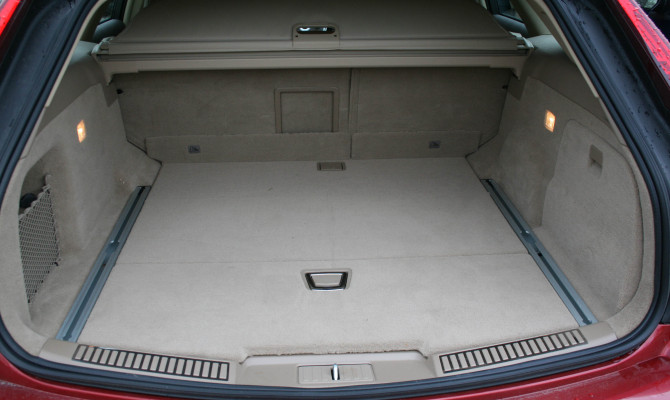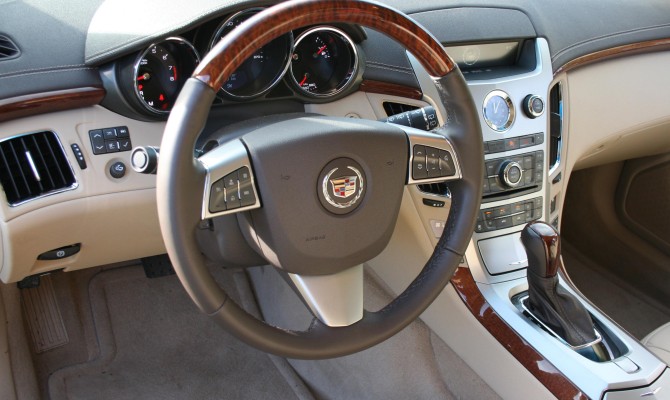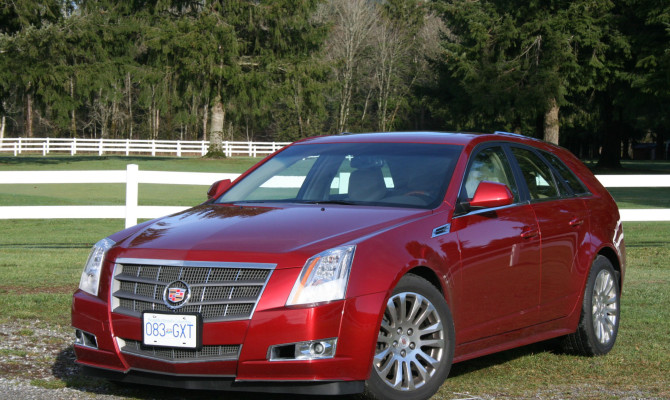“Its high-powered V variant embarrassed Euro competitors by smashing the production car lap speed record at the revered Nurburgring, in Germany.”
The CTS Sport Wagon (2010–2013) was the first in-house full production wagon (based on a sedan) made by Cadillac.
The CTS has clean, crisp, edgy styling that is distinctively modern Cadillac. The sedan edition of the highly successful rear-drive CTS was introduced for the 2003 model year and captured numerous awards. Its high-powered V variant, which followed in 2004, embarrassed Euro competitors of the day by smashing the production car lap speed record at the revered Nurburgring, in Germany.
These days, wagons are less popular here than in Europe, so the available local used car market pool, for this edition of the CTS, is not a very deep one. North Americans tend to buy utility type vehicles instead of a wagon. A wagon is typically closer to a sedan in terms of driving dynamics, yet has more than double the cargo capability.
A CTS Sport Wagon is a little taller and heavier than the sedan, it offers 736 litres of storage space with the rear seats up, and 1,642 litres with them folded. There’s also a clever sub-floor cargo management system and the rear door is power-operated.
The base engine is a 3.0-litre (255 horsepower) V6 that’s mated to six-speed automatic transmission. The other engine is a 24-valve, 3.6 litre, direct injection (304 horsepower) V6, that provides more torque at lower engine speeds, yet fuel economy is about the same. Using the newly revised rating method, consumption should be about 12.8/8.6 L/100 km (city/highway).
The CTS can also come with an all-wheel drive system that normally splits torque 30/70 front-to-rear, to maintain its sporty (rear-drive) driving dynamic. It’s capable of delivering up to100 per cent of torque to either axle if needed, but there is a small increase fuel consumption.
An interesting adaptive forward lighting system was included in an option package that came with Xenon headlights. This system automatically adjusts headlight direction for improved visibility at night. It can also turn the headlights up to 15 degrees inboard and 5 degrees outboard, providing better vision while cornering.
The big news for 2011 model year was the addition of a, limited edition, high-performance CTS-V Sport Wagon model. Like the V sedan it’s powered by a 556-horsepower supercharged V8 engine and came with 6-speed manual transmission or optional 6-speed automatic. You’ll likely pay a $20,000 premium (maybe more) to acquire a (hard to find) used CTS-V Wagon.
The 2012 edition of the CTS Sport Wagon came with a new 3.6-litre V6 engine that is more powerful (318-horsepower) yet lighter than the 3.6-litre engine it replaced. It also came with a new grille, standard Bluetooth and a new option package that made it look like a V Wagon. No significant changes followed for 2013 and it was the last production year of this generation of the CTS.
Although it can be harder to find in the used car market, Sport Wagon adds a handy utility bonus, without destroying the scintillating driving experience that is Cadillac CTS.
Price Check: 2010 – 2013 Cadillac CTS (January 2015)
Year Edition Expect to Pay Today
2010 Sport Wagon $17,000 to $21,000
2011 Sport Wagon $21,000 to $25,000
2012 Sport Wagon $25,000 to $29,000
2013 Sport Wagon $30,000 to $35,000
*Prices vary depending on a used vehicle’s condition, mileage, usage and history. A complete mechanical check should always be performed by a reliable auto technician prior to purchase.
Safety Recalls: 2010 to 2013 Cadillac CTS:
2003 to 2014: Some drivers may bump the ignition key with their knee and unintentionally move the key from out of the “run” position. A subsequent loss of engine power would unexpectedly increase steering and brake pedal effort, and airbags may not deploy in a collision. Dealers will remove the key blade from the original flip key/transmitter assemblies provided with the vehicle, and provide two new keys and two key rings for every original key.
2009/2010 – A wax coating applied to rear suspension toe link jam nuts may allow them to loosen. This causes a metallic clanking noise from the rear of the vehicle and the toe link could eventually separate. Dealers will clean, install two new jam nuts and, if required, the rear suspension toe link will be replaced.
2011: A loss of grease from the centre constant velocity (CV) joint, on all-wheel-drive editions, can result in vibrations of the propeller shaft. These vibrations may be transferred to a rollover sensor, located on the floor above it, and cause an unwarranted deployment of the side curtain airbags. Dealers will replace the rear propeller shaft assembly.
2012 – The brake booster pushrod retention nut may not have received adequate tightening torque during vehicle assembly and could separate from the brake pedal assembly. Dealers will inspect the pushrod retention nut and, if necessary, torque the nut to specification.
Recent Comments
- { Enjoyed your Forest of Bowland in the BMW X5M, particularly the photo of the BMW in front of the main part of Stonyhurst College where... }
- { Bantam designed the Jeep, not Willy's or Ford. The American military gave the original Bantam prototype to Willys and Ford to copy. There is plenty... }
- { All Escalades come with a 6.2-lilter V8 engine that produces 420 horsepower. A six-speed automatic is the only transmission offered and drives the rear wheels.... }
- { Alexandra is an excellent journalist. }
Popular Posts
- Journey to a ‘Sparkling’ Luxury Okanagan Resort “Four lucky readers will put a Dodge Journey’s weekend-...
- The Need For Speed: Hike Those Highway Limits More than half of those polled believe the province sho...
- Drives-U-Crazy… Erratic drivers. An early morning drive from Kelowna to Vancouver is nor...
- Readers Respond: The Pros and Cons of Increasing B.C. Speed Limits Increasing the speed limits will only increase risk to...
- Honda CR-V Review: The Compact Crossover To Get Things Done The CRV is a very stylish and aerodynamic crossover veh...


